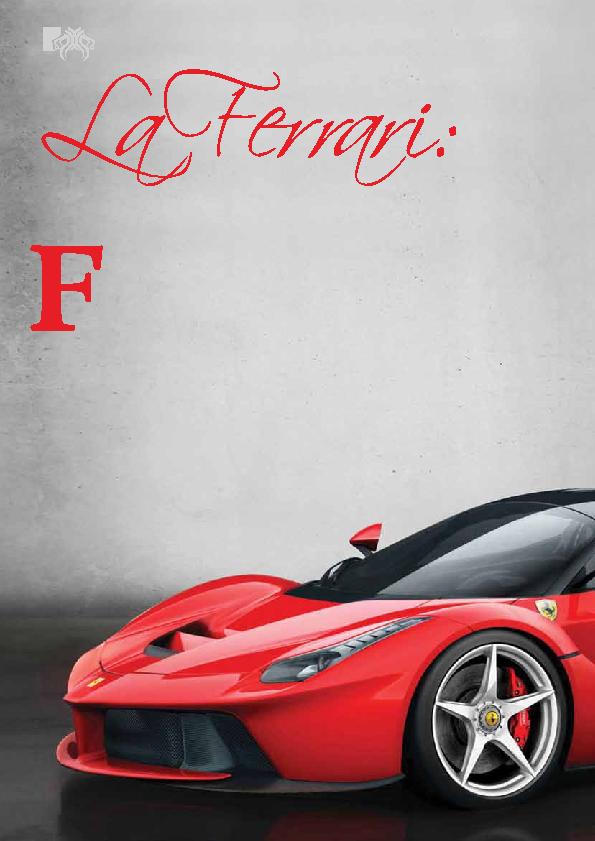
first hybrid with 963hp
word for it "Wow!"
According to Ferrari President, Luca di
Montezemolo, the decision to name the car
hinged on it being the "maximum expression of
what defines our company excellence."
LaFerrari combines the best of the marque's
technical capabilities in both GT and Formula
1 engineering, resulting in the delivery of the
most extreme performance of any Ferrari
production car, ever.
energy recovery system) that Ferrari says will
ultimately filter through to the rest of its range.
HY-KERS seamlessly integrates the most
powerful naturally aspirated engine ever used
on a Ferrari road car, a 6.3 litre V12 engine with
the electric motor to achieve mind-numbing
performance with maximum efficiency.
performance. It's all sweet, all the way. The
high levels of torque provided at low revs by
the electric motor, freed designers to get stuck
into optimising the V12's performance at higher
revs. The result is consistent power throughout
the rev range with a maximum torque of more
than 900 Nm. Yeah, that'll do!
of mice and men. Not so with LaFerrari. Using
High Specific Power Density technology to
design the electric motors, engineers were able
to achieve maximum power-to-weight ratio with
as an F1 car. Next, a complex and advanced
120-cell battery solution was developed,
delivering a power output equivalent to 40
traditional batteries and weighing just 60 kg.
The batteries are charged both under braking
and by converting excess torque into energy
and redirecting it from the wheels to the
batteries.
DC-DC converters to control power delivery
from the V12 and the electric motors. The
result is rapid and precise torque delivery,
lower fuel consumption and C02 emissions of
just 330 g/km pretty impressive emissions
considering that the vehicle is not designed to
operate in electric-only drive.
chassis were designed
under the